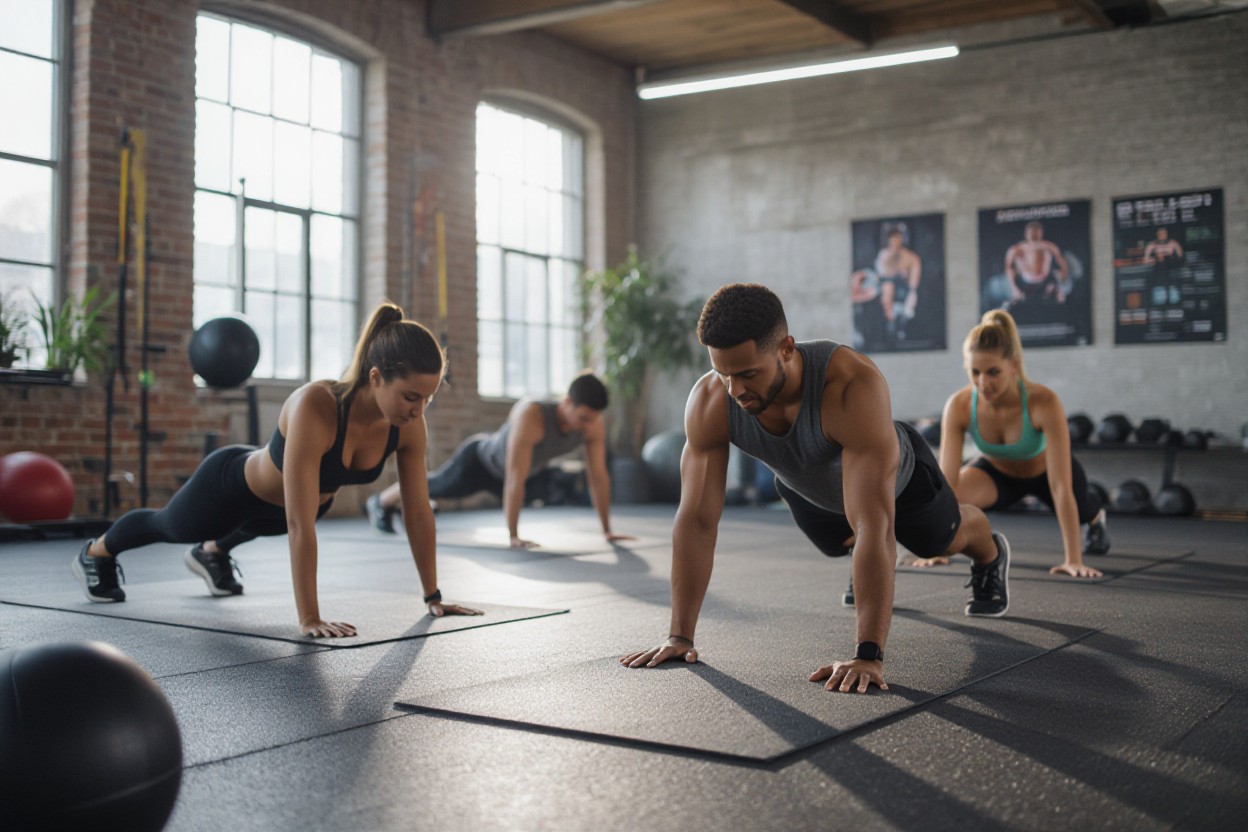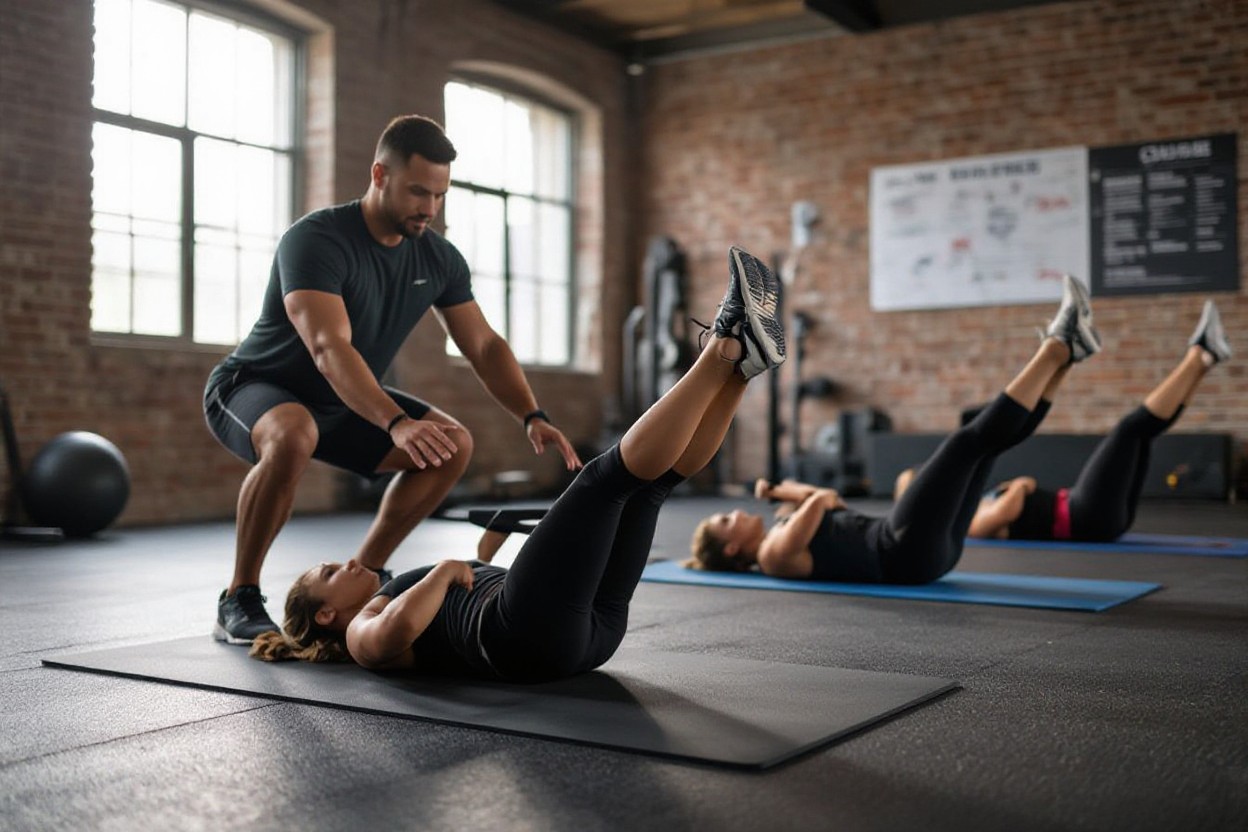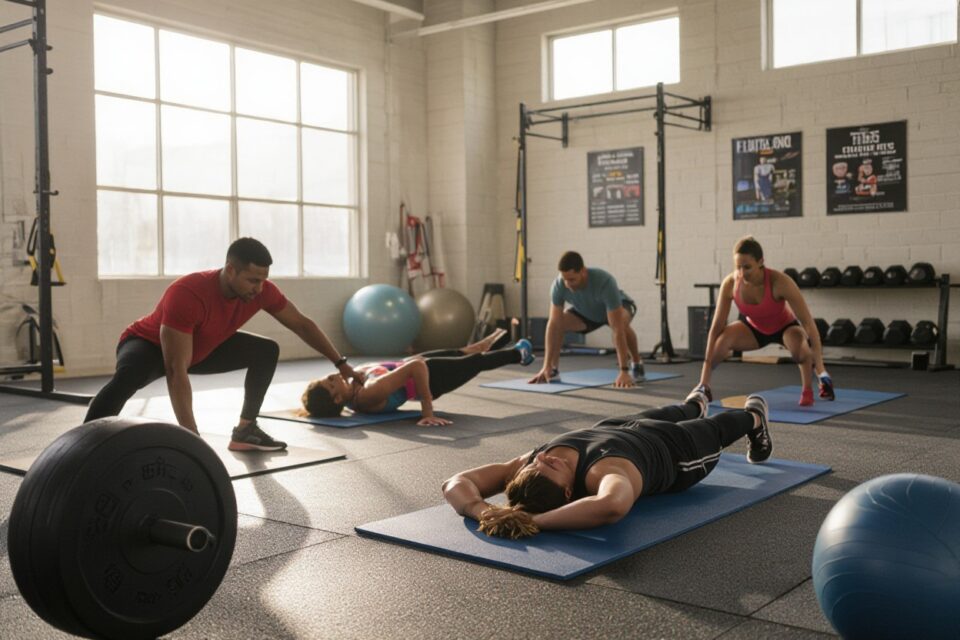Many people underestimate the importance of a strong core, yet it supports nearly every movement you make daily. By incorporating these 15 abs moves into your routine, you can develop a core that not only enhances your athletic performance but also protects your lower back from injury. These exercises carefully target all areas of your abdominal muscles, helping you build balanced strength and endurance. Whether you’re a beginner or advancing your fitness, you’ll find these moves effective in sculpting and fortifying your core like never before.
The Anatomy of a Strong Core
Your core is far more than just your abs; it’s an interconnected system that stabilizes and powers your entire body. This complex network includes muscles that wrap around your torso, supporting your spine, pelvis, and hips. Strengthening these muscles not only sculpts your waistline but also boosts your posture, balance, and overall functional movement. A well-developed core shields you from injuries by evenly distributing loads and reducing strain on your back during everyday activities and workouts alike.
Key Muscles Involved in Core Strength
The core encompasses the rectus abdominis, commonly known as the “six-pack,” but also heavily involves the transverse abdominis—the deep muscle that stabilizes your spine—and the obliques, which help with twisting and bending motions. Additionally, your erector spinae muscles along the lower back and the pelvic floor muscles contribute significantly to maintaining balance and power. Engaging all these muscles harmoniously is imperative to develop a truly robust and resilient core.
The Importance of Core Stability
Core stability acts as the foundation for nearly every movement you perform, from walking to lifting heavyweights. Without it, your body compensates by overusing less efficient muscles, which can lead to imbalances and pain. Stable core muscles control your posture and spinal alignment, allowing forces to be transferred safely and efficiently throughout your body.
Studies show that athletes with strong core stability experience fewer injuries and better performance in speed, agility, and endurance tasks. For you, increasing core stability means enhanced control over your movements, reducing wear and tear on joints over time and improving your ability to generate force precisely and powerfully.
Beyond Crunches: Innovative Abs Exercises
Diving deeper than traditional crunches, you unlock new dimensions of core strength by embracing innovative exercises that challenge stability and coordination. Techniques like hanging leg raises or cable woodchoppers engage your core in dynamic motions, improving functional strength and muscular endurance. These movements demand control and precision, targeting your entire midsection more effectively. Shifting your routine to include these multifaceted exercises breaks through plateaus and fosters a more resilient, powerful core that supports everything from athletic performance to daily posture.
Plank Variations That Pack a Punch
Planks become game-changers when you add variations such as side planks, plank jacks, or spider planks, which enhance stability and engage multiple muscle groups simultaneously. Side planks, for example, focus intensely on your obliques, while plank jacks introduce cardio intensity and coordination. By rotating through these variations, you continually stimulate your core in fresh ways, increasing muscular endurance and improving balance without the monotony of traditional holds.
Implementing Ball Exercises for Enhanced Engagement
Incorporating stability balls into your ab workouts intensifies engagement by forcing your core to work overtime to maintain balance. Exercises like ball rollouts or pikes challenge your abdominal muscles and deep stabilizers, activating smaller, often neglected fibers for comprehensive strengthening. The unstable surface encourages controlled motion, which helps improve proprioception and functional core strength that transfers to better everyday movement.
Using a stability ball amplifies your workout by demanding constant micro-adjustments from your core muscles. For instance, performing a ball rollout involves extending your body while keeping hips aligned, which activates the rectus abdominis and transverse abdominis deeply. Research demonstrates that stability ball exercises can increase core muscle activation by up to 30% more than traditional floor exercises, providing you with a more efficient way to sculpt a stronger, more stable midsection.

Incorporating Functionality into Your Routine
Integrating functional movements that mimic daily activities significantly enhances your core’s strength and stability. Instead of isolating muscles, focus on exercises that engage multiple muscle groups simultaneously, improving coordination and making everyday tasks easier. Functional core training emphasizes balance, rotational strength, and dynamic control, which are often overlooked in traditional ab workouts. By weaving these elements into your routine, you prepare your body to efficiently handle real-world challenges and reduce the risk of injury during activities like lifting, twisting, or sudden directional changes.
Compound Movements for Core Activation
Compound exercises such as deadlifts, squats, and overhead presses recruit your core as a natural stabilizer, demanding endurance and power from your abdominal muscles to maintain posture. When you perform a barbell squat, for example, your abs brace to protect your spine against compressive forces. Incorporating these lifts into your training not only burns more calories but strengthens your core under load, enhancing strength beyond isolated ab work. By challenging your core in these multi-joint moves, you’re training it to function under pressure—translating directly to improved performance in sports and daily tasks.
How Yoga and Pilates Enhance Core Strength
Yoga and Pilates emphasize controlled breathing, precise alignment, and sustained muscle engagement, all of which foster deep core stability. Movements like the Pilates teaser or yoga plank variations target not just your superficial abs but also the transverse abdominis, a key muscle that acts like an internal corset. Regular practice enhances muscular endurance and flexibility, allowing your core to support your spine more effectively over longer periods. Their holistic approach integrates mind-body connection, helping you engage your core intentionally during every movement and posture.
Delving deeper, Pilates’s focus on “powerhouse” training activates the deep core muscles, including the pelvic floor and multifidus, which are crucial for spinal integrity and preventing lower back pain. Meanwhile, yoga styles such as Vinyasa and Ashtanga build core strength through fluid sequences requiring balance and sustained isometric holds that challenge endurance. Both methods improve proprioception, ensuring your core muscles respond swiftly and efficiently to shifts in body position, ultimately boosting your ability to stabilize, protect, and generate force.

The Role of Nutrition in Core Development
Your core strength depends heavily on what you fuel your body with, as nutrition directly impacts muscle recovery, growth, and endurance. Incorporating the right balance of macronutrients and micronutrients supplies your muscles with the energy to perform and regenerate. Neglecting this aspect can hinder progress despite an effective abs routine, so aligning your diet with your fitness goals amplifies the results of every rep and set in your core workout.
Foods That Fuel Muscle Growth
Lean proteins like chicken, turkey, and fish provide imperative amino acids to rebuild damaged muscle fibers after exercise. Complex carbs such as quinoa, brown rice, and sweet potatoes deliver sustained energy, supporting longer and more productive core training sessions. Adding healthy fats from sources like avocados, nuts, and olive oil not only reduces inflammation but also aids hormone production, which plays a part in muscle repair and growth, making them an indispensable part of your muscle-strengthening diet.
The Best Hydration Practices for Optimal Performance
Staying well-hydrated improves muscle function and endurance, lessening fatigue during your abs workouts. Drinking at least 16-20 ounces of water two hours before exercise optimizes hydration levels, while sipping 7-10 ounces every 10-20 minutes during workouts helps replace fluids lost through sweat. Post-workout hydration combined with electrolyte replenishment accelerates recovery, so incorporating drinks with sodium or potassium can be beneficial.
Water acts as a medium for nutrient transport and waste removal in your body, directly influencing your muscle’s ability to work efficiently. Studies reveal that as little as a 2% drop in hydration impairs physical performance, especially in exercises targeting small, stabilizing muscles in your core. Electrolytes like sodium, potassium, and magnesium lost through sweat affect muscle contraction and nerve function, which emphasizes integrating hydrating foods or drinks containing these minerals to maintain your abs’ peak strength and responsiveness.

Charting Progress: Measuring Core Strength Effectively
Tracking your core strength progress consistently gives you clear feedback on what’s working and what needs adjustment. Simple metrics like increased hold times in planks or higher reps in leg raises, combined with performance improvements in compound lifts, reveal how your core adapts. Using apps or workout journals to log your results every week helps you spot patterns and prevent plateaus. Without objective measures, it’s easy to overestimate gains, so aim to measure specific benchmarks that reflect your unique strength goals.
Key Performance Indicators for Core Exercises
Your core workout success can be gauged by indicators such as plank duration surpassing two minutes, performing 20+ controlled hanging leg raises, or improving rotational power measured through medicine ball throws. Additionally, enhanced stability during squats and deadlifts often signals a stronger core. Be precise: track time, reps with form quality, and even balance improvements with single-leg exercises—these specifics provide solid evidence of advancement beyond subjective feelings.
How to Adapt Your Routine Based on Progress
When core exercises become less challenging—like holding a plank for over 90 seconds without strain—it’s time to increase intensity. Introducing weighted planks, adding tempo variations, or incorporating dynamic moves like cable rotations can push your core further. Likewise, if progress stalls, modifying volume or switching to more targeted movements like cable woodchoppers or stability ball rollouts can reignite gains. Flexibility in your routine ensures continued development and prevents plateaus.
Expanding on adaptations, consider periodizing your core training by cycling through phases: foundational endurance, hypertrophy with added resistance, and power-oriented explosive movements. For example, once you can comfortably execute 30-second side planks, raise the challenge by holding a dumbbell on your hip or performing slow pulses. Additionally, balancing static holds with dynamic exercises like mountain climbers keeps muscles responsive and functional. This strategic variability not only enhances strength but also builds resilience against injury, tailoring your core routine closely to your evolving fitness level.
To wrap up
Ultimately, incorporating these 15 abs moves into your routine will significantly enhance your core strength, providing you with greater stability and improved posture. By consistently practicing these exercises, you engage all the key muscles in your midsection, which supports better balance and overall athletic performance. You’ll find your daily movements become easier and your risk of injury diminishes as your core becomes more resilient. Embrace these exercises as a foundational part of your fitness journey to build a stronger, more functional core that supports your active lifestyle.
FAQ
Q: What are the benefits of incorporating 15 ab exercises into my workout routine?
A: Including a variety of 15 ab exercises in your workout helps target different muscles within the core, improving overall strength, stability, and endurance. This balanced approach enhances posture, reduces the risk of injury, and supports better performance in other physical activities.
Q: How often should I perform these 15 ab moves to see noticeable improvement in core strength?
A: For optimal results, aim to complete these ab exercises 3 to 4 times per week. Consistency allows your muscles to adapt and grow stronger while providing adequate recovery time between sessions.
Q: Can beginners safely try all 15 ab exercises at once?
A: Beginners should start with a smaller selection of ab moves, focusing on proper form before gradually increasing intensity and variety. Attempting all 15 at once may lead to fatigue or improper technique, which can cause strain or injury.
Q: What types of equipment, if any, are needed for these ab exercises?
A: Many of the 15 ab moves can be performed using just body weight, making them accessible anywhere. However, incorporating equipment like stability balls, resistance bands, or dumbbells can enhance difficulty and provide added resistance for advanced training.
Q: Will working on these ab exercises reduce belly fat?
A: While strengthening the core improves muscle tone, targeted ab exercises alone do not specifically burn belly fat. Fat loss requires a combination of regular cardiovascular activity, overall strength training, and a balanced diet.
Q: How do these ab moves contribute to better posture?
A: Strengthening the core muscles through these exercises provides support for the spine and pelvis, which helps maintain proper alignment. Improved core stability reduces slouching and lowers back discomfort associated with poor posture.
Q: Can these ab exercises improve performance in sports or other physical activities?
A: Yes, a stronger core enhances balance, coordination, and power, which are crucial in many sports and physical pursuits. Regularly training the abs using diverse movements can lead to better athletic performance and reduced injury risk.
